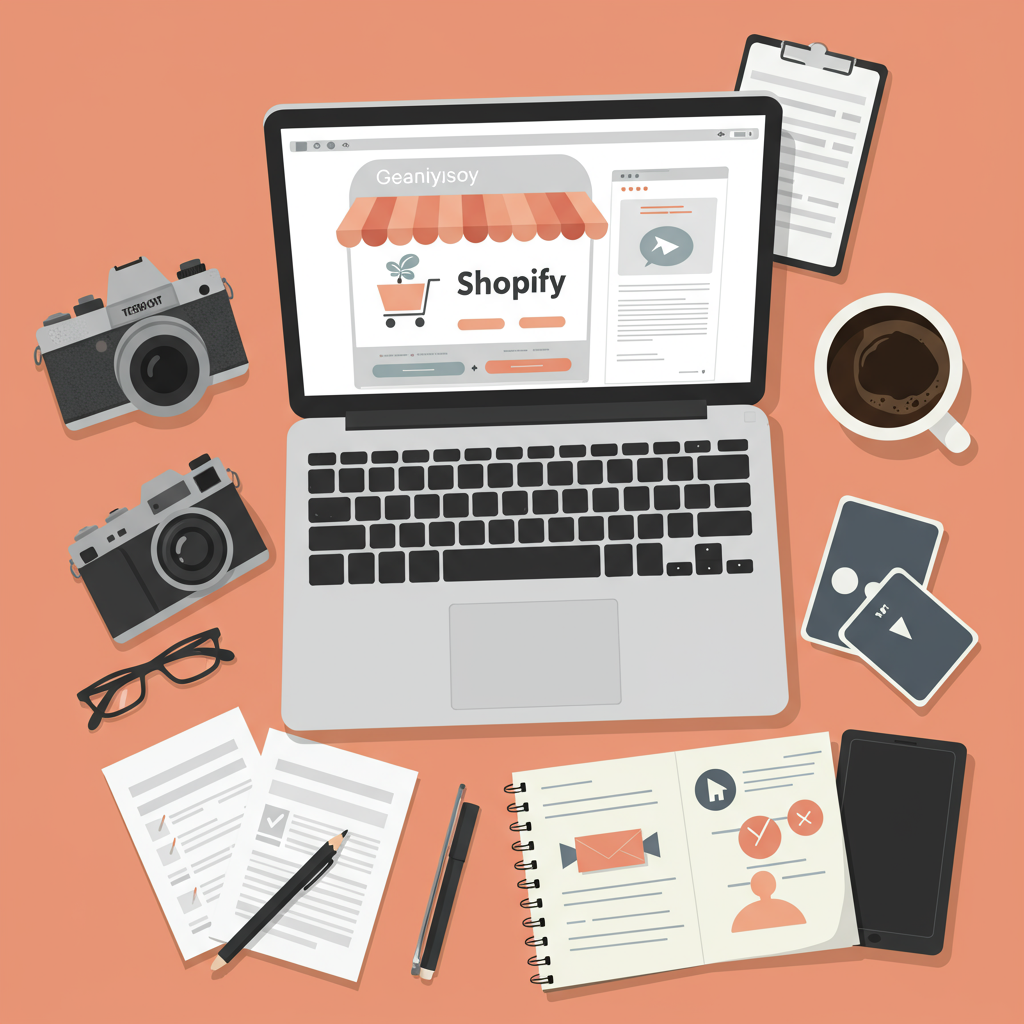Discover actionable strategies to attract, engage, and convert customers using compelling content on your Shopify platform.
Welcome, fellow merchant! I’m here to talk about something truly transformative for your Shopify store: content marketing.
Many of us focus intensely on product development, advertising campaigns, and store design, but often overlook the immense power of content to build trust and drive sustainable sales.
Content marketing isn’t just about selling; it’s about educating, entertaining, and solving problems for your audience, positioning your brand as an authority.
Before I create any piece of content, I always ask myself: ‘Who am I talking to?’ Understanding your ideal customer is absolutely paramount.
What are their pain points? What do they aspire to? What questions do they have about your products or industry? Your content should directly address these.
Every piece of content I create for my Shopify store is built with search engine optimization (SEO) in mind from the very beginning.
This means diligently researching the keywords your audience uses and naturally incorporating them into titles, headings, and the body text of your content.
**Content Type 1: Blog Posts.** These are the cornerstone for many successful Shopify stores. I use them to establish authority and drive organic traffic.
A fantastic blog idea is ‘How-to’ guides. If you sell specialty coffee makers, a detailed guide on ‘How to Brew the Perfect Espresso at Home’ is incredibly valuable.
Another effective blog format is product comparisons. ‘X vs. Y: Which [Product Category] is Right for You?’ helps customers make informed purchasing decisions.
Lifestyle content is also powerful. Show your products in action. If you sell outdoor gear, share inspiring stories of adventures using your products.
Don’t forget FAQs and problem-solving posts. Turn common customer questions into detailed blog articles, like ‘Troubleshooting Your New [Product]’.
**Content Type 2: Optimized Product Descriptions.** These aren’t just technical specifications; they are sales pages. I write compelling stories.
Focus on the benefits, not just the features. How will this product improve my customer’s life? Use evocative, sensory language to paint a picture.
**Content Type 3: Visual Content.** Shopify is inherently a visual platform. High-quality images and videos are non-negotiable for conversion.
Your product photography should be professional, showcasing different angles, textures, and contexts. Lifestyle shots are particularly crucial for emotional connection.
Short, engaging product videos demonstrating usage, unique features, or the ‘unboxing’ experience can significantly boost conversion rates.
Infographics are excellent for simplifying complex information about your products or industry, making it digestible, shareable, and visually appealing.
**Content Type 4: Email Marketing.** Your email list is pure gold. I use it strategically to nurture leads and drive repeat purchases.
Send regular newsletters with new product announcements, exclusive discounts, and valuable content from your blog to keep your audience engaged.
Automated sequences like welcome series for new subscribers, abandoned cart reminders, and post-purchase follow-ups are incredibly effective for driving sales.
**Content Type 5: Social Media Content.** This is where I build community, foster brand loyalty, and engage directly with my audience.
Share behind-the-scenes glimpses of your business, run polls, ask questions, and host contests to boost engagement and create a buzz.
Utilize shoppable posts on platforms like Instagram and Facebook to make the path from discovery to purchase as seamless as possible for your customers.
**Content Type 6: User-Generated Content (UGC).** Nothing builds trust and authenticity like real customer experiences.
Actively encourage customers to share photos or videos of themselves using your products. Feature these prominently on your store and social media channels.
Collect and display customer reviews and testimonials. They are powerful social proof and often contain valuable keywords for SEO.
**Content Type 7: FAQs and Knowledge Bases.** A dedicated section for common questions saves customer service time and builds customer confidence.
**Content Type 8: Case Studies/Success Stories.** If applicable to your business, showcase how your product has solved a specific problem for a customer.
**Distribution:** Creating amazing content is only half the battle. I actively promote my content across all relevant channels to maximize its reach.
Share your blog posts on all your social media platforms, include them in your email newsletters, and link to them directly from relevant product pages.
**Measurement:** I constantly monitor my content’s performance using Shopify analytics, Google Analytics, and other relevant tools.
Track key metrics like traffic to content pages, time on page, bounce rate, conversion rates, and ultimately, sales attributed to specific content pieces.
Use these insights to refine your strategy. What content resonates most with your audience? What needs improvement? It’s an iterative process.
I’ve shared a lot of my insights here. What do you think about these content marketing ideas for Shopify? I’d love to hear your thoughts!
Implementing these diverse content marketing strategies can truly transform your Shopify store from a simple storefront into a thriving, authoritative brand.
It’s a long-term investment, but the returns in terms of customer loyalty, brand authority, organic traffic, and ultimately, increased sales, are immense and well worth the effort.






